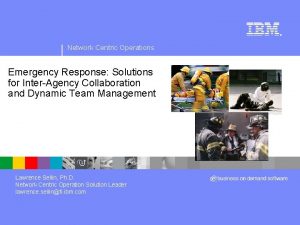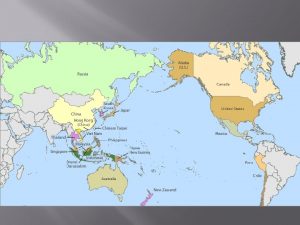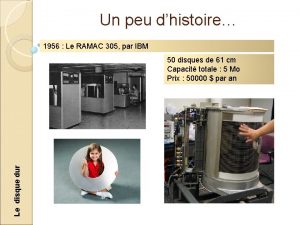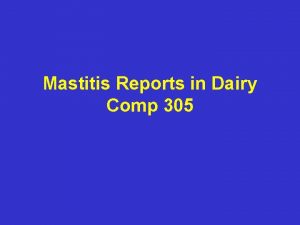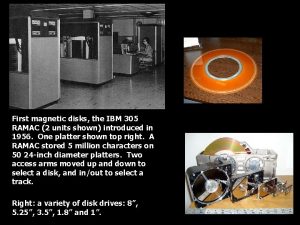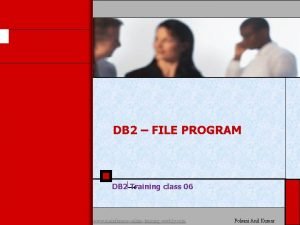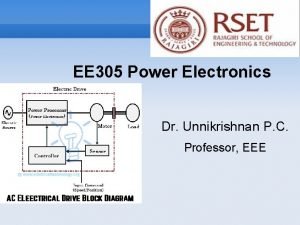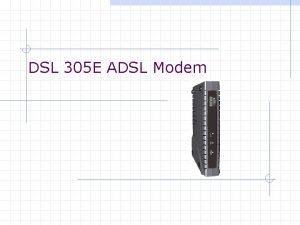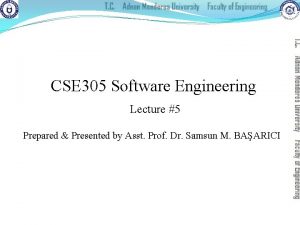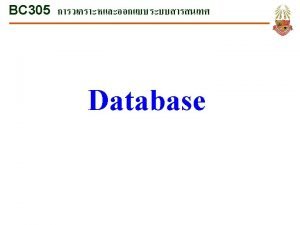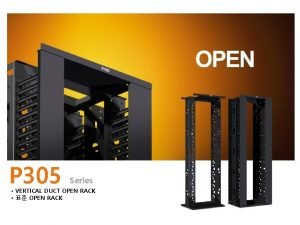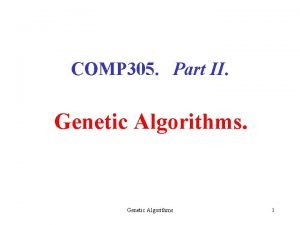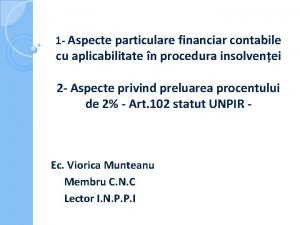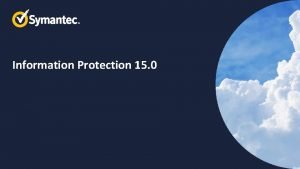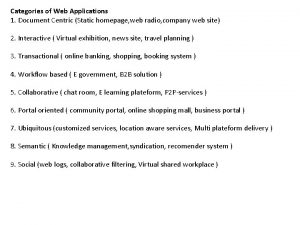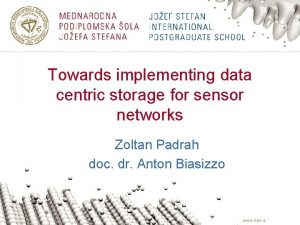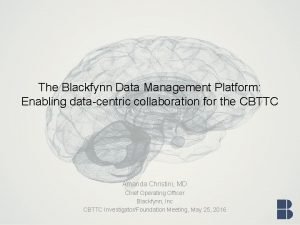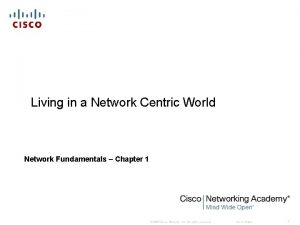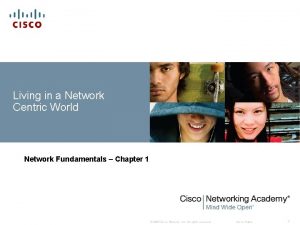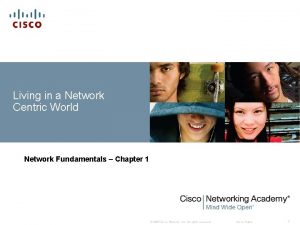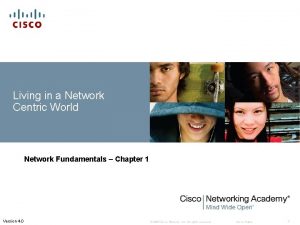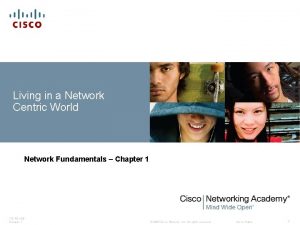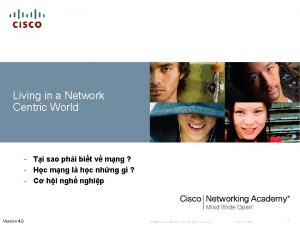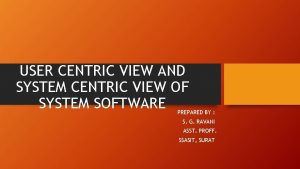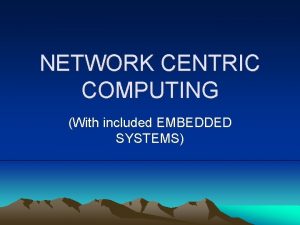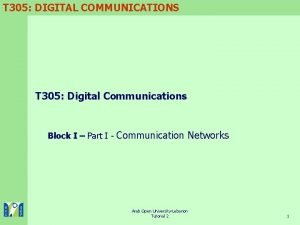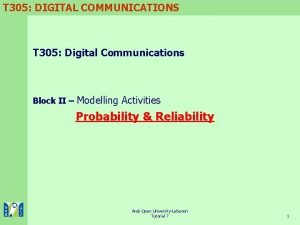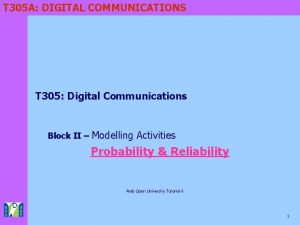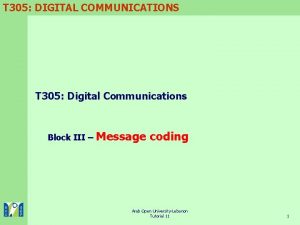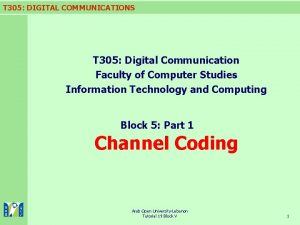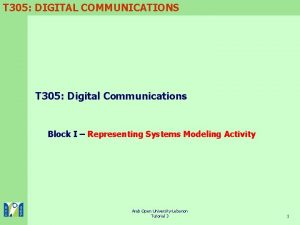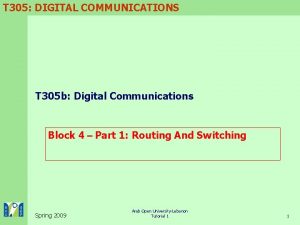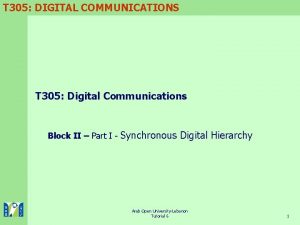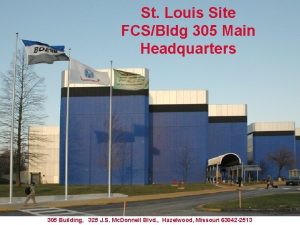Living in a Network Centric World IT 305














































- Slides: 46

Living in a Network Centric World IT 305: Computer Networks – Chapter 1 © 2007 Cisco Systems, Inc. All rights reserved. Cisco Public 1

Course Info § Dr. Walid Khedr, Ph. D. –Email: khedrw@yahoo. com –Web: www. staff. zu. edu. eg/wkhedr –Department of Information Technology 2/46

Contents 1. Living in a Network-Centric World 2. Communicating over the Network 3. Application Layer Functionality and Protocols 4. OSI Transport Layer 5. OSI Network Layer 6. Addressing the Network IPv 4 7. Data Link Layer 8. OSI Physical Layer 9. Ethernet 10. Planning and Cabling Networks 11. Configuring and Testing Your Network 3/46

Introduction § Among all of the essentials for human existence is the need to interact with others. § Communication is almost as important to us as our reliance on air, water, food. § The creation and interconnection of robust Data Networks is having a profound effect. 11/46

Data Networks § Current data networks have evolved to carry voice, video streams, text, and graphics between many different types of devices 12/46

Communication § It can be in many forms and occurs in many environments § Before beginning to communicate with each other, we establish rules or agreements to govern the conversation. (Protocols) § Among the protocols that govern successful human communication are: – An identified sender and receiver – Agreed upon method of communicating (face-to-face, telephone, letter, photograph) – Common language and grammar – Speed and timing of delivery – Confirmation or acknowledgement requirements 13/46

The Elements of Digital Communication § Message sources devices that need to send a message to devices. § A channel, consists of the media that provides the pathway over which the message can travel from source to destination. § Messages can be sent across a network by first converting them into binary digits, or bits. These bits are then encoded into a signal that can be transmitted over the appropriate medium. 14/46

A Closer Look at Network Structure 15/46

Network Edge (End Devices) 16/46

The Network Core and Intermediary Devices 17/46

Network Core § Mesh of interconnected routers that connect the Internet’s end systems. § The fundamental question: how is data transferred through net? –Circuit Switching: dedicated circuit per call: telephone net –Packet-Switching: data sent thru net in discrete “chunks” 18/46

Network Core: Circuit Switching § A circuit-switched network is one that establishes a dedicated circuit (or channel) between nodes and terminals before the users may communicate. 19/46

Network Core: Circuit Switching § The four circuit switches are interconnected by four links. § Each of these links consists of n circuits, so that each link can support n simultaneous connections. 20/46

Multiplexing Circuit Switching § Frequency Spectrum: the difference between the highest and lowest frequencies available for network signals. § Frequency Division Multiplexing (FDM): The frequency spectrum of a link is shared among the connections established across the link. –The link dedicates a frequency band to each connection for the duration of the connection. § Time Division Multiplexing (TDM): Time is divided into frames of fixed duration and each frame is divided into a fixed number of time slots. –When the network establish a connection across a link, the network dedicates one time slot in every frame to the connection. 21/46

Multiplexing Circuit Switching Example: FDM 4 users frequency time TDM frequency time 22/46

Network Core: Packet Switching § Packet switching splits traffic data into packets that are routed over a shared network. § Packet-switching networks do not require a circuit to be established, and they allow many pairs of nodes to communicate over the same channel. 23/46

Multiplexing Packet Switching § STDM method analyzes statistics related to the typical workload of each input device (printer, fax, computer) and determines on-thefly how much time each device should be allocated for data transmission on the cable or line. 24/46

Four sources of packet delay transmission A B propagation nodal processing queueing dnodal = dproc + dqueue + dtrans + dprop dtrans: transmission delay: § L: packet length (bits) § R: link bandwidth (bps) § dtrans = L/R dtrans and dprop very different dprop: propagation delay: § d: length of physical link § s: propagation speed in medium (~2 x 108 m/sec) § dprop = d/s * Check out the Java applet for an interactive animation on trans vs. prop delay 25/46

Communicating Over Networks § All networks have four basic elements in common: – Rules or agreements to govern how the messages are sent, directed, received and interpreted – The messages or units of information that travel from one device to another – A means of interconnecting these devices - a medium that can transport the messages from one device to another – Devices on the network that exchange messages with each other 26/46

The Elements of a Network § Devices – These are used to communicate with one another § Medium – This is how the devices are connected together § Messages – Information that travels over the medium § Rules – Governs how messages flow across network 27/46

The Elements of a Network 28/46

The Elements of a Network § Network connections can be wired or wireless § Cable: UTP, Coaxial, Optic Fibers etc § Wireless: Bluetooth, laser, microwave etc 29/46

The Elements of a Network § Protocols are the rules that the networked devices use to communicate with each other. The industry standard in networking today is a set of protocols called TCP/IP (Transmission Control Protocol/Internet Protocol). § On the top of TCP/IP: 30/46

The Elements of a Network 31/46

The Elements of a Network 32/46

The Elements of a Network 33/46

The Elements of a Network 34/46

The Elements of a Network 35/46

The Elements of a Network 36/46

The Elements of a Network 37/46

Converged Networks § Traditional telephone, radio, television, and computer data networks each have their own individual versions of the four basic network elements. § In the past, every one of these services required a different technology to carry its particular communication signal. 38/46

Converged Networks § Technology advances are enabling us to consolidate these disparate networks onto one platform - a platform defined as a converged network. 39/46

Network Architecture Characteristics § There are 4 basic characteristics for networks in general to meet user expectations – Fault tolerance – Scalability – Quality of service (Qo. S) – Security 40/46

A Fault Tolerant Network Architecture § Fault tolerance is the ability for a network to recover from an error, such as the failure of a device or a link (a connection between two devices). § Fault tolerance is often achieved by having redundant devices or links, so that if one fails, messages can be re -routed around the failure through other devices or links. 41/46

A Fault Tolerant Network Architecture § Early network type: Circuit switched connectionoriented network 42/46

A Fault Tolerant Network Architecture § Packet switched networks, the data are broken up into many small packets that are sent independently through the network, each finding its own best route through the network. 43/46

A Scalable Network Architecture § Scalability means the ability to expand to meet new demands. § Most networks are designed in a hierarchical, layered approach so new devices and links can be added without interfering with existing networks. 44/46

Providing Quality of Service (Qo. S) § Quality of Service is a control mechanism that can provide different priority to different users or data flow or guarantee a certain level of performance to a data flow in accordance with request from the application program. 45/46

Providing Quality of Service (Qo. S) 46/46

Providing Quality of Service (Qo. S) 47/46

Providing Network Security § Unauthorized use of communication data might have serious consequences § 2 types of network security concerns that must be addressed to prevent serious consequences: – Network Infrastructure Security - physical securing of devices that provide network connectivity and preventing unauthorized access to the management software that resides on them – Content Security - protecting the information contained within the packets being transmitted over the network and the information stored on network attached devices 48/46

Providing Network Security § Security measures taken in a network should: – Prevent unauthorized disclosure or theft of information – Prevent unauthorized modification of information – Prevent Denial of Service § Means to achieve these goals include: – Ensuring confidentiality – Maintaining communication integrity – Ensuring availability 49/46

Summary 50/46

Reading § Chapter 1 - Living in a Network-Centric World § Packet Tracer Skills Integration Activity 1. 7. 1. 3 51/46

Next Lecture § Chapter 2: Communicating over the Network 52/46

Questions 53/46
 Network centric computing
Network centric computing Network centric solutions
Network centric solutions Eurocentric map
Eurocentric map Venn diagram living and non living
Venn diagram living and non living Is it living
Is it living Living non living dead
Living non living dead What is the smallest living unit of life
What is the smallest living unit of life Ibm ramac 305
Ibm ramac 305 Tipos de soldadura
Tipos de soldadura Wac 296-155-305
Wac 296-155-305 Dairy comp 305 price
Dairy comp 305 price Ibm 305 ramac price
Ibm 305 ramac price Wac 296-305
Wac 296-305 English 305 book
English 305 book Wac 296 305
Wac 296 305 Sqlcode 305
Sqlcode 305 Priia 305
Priia 305 305 pwp
305 pwp Ee-305
Ee-305 Color 11182009
Color 11182009 Lps-305
Lps-305 Dh zucchetti
Dh zucchetti Dlsl-305
Dlsl-305 Dlsl-305
Dlsl-305 Cse 305
Cse 305 Bc 305
Bc 305 P-305
P-305 كراش مرحلة ١٧٢
كراش مرحلة ١٧٢ 305 in word form
305 in word form 704 kar 3:305
704 kar 3:305 Genetic algorithms
Genetic algorithms Art 305 cod fiscal
Art 305 cod fiscal Interocclusal clearance
Interocclusal clearance Wisatawan midcentric
Wisatawan midcentric Vertical overlap
Vertical overlap Protrusive relation
Protrusive relation Lingualized occlusion
Lingualized occlusion Symantec information centric tagging
Symantec information centric tagging Data driven coaching
Data driven coaching Centric federal credit union
Centric federal credit union Document centric web application
Document centric web application Server centric storage architecture
Server centric storage architecture Data-centric pathology
Data-centric pathology Clinical remount vs lab remount
Clinical remount vs lab remount Occlusion definition in orthodontics
Occlusion definition in orthodontics Designing learner-centric moocs
Designing learner-centric moocs Define balanced occlusion
Define balanced occlusion

